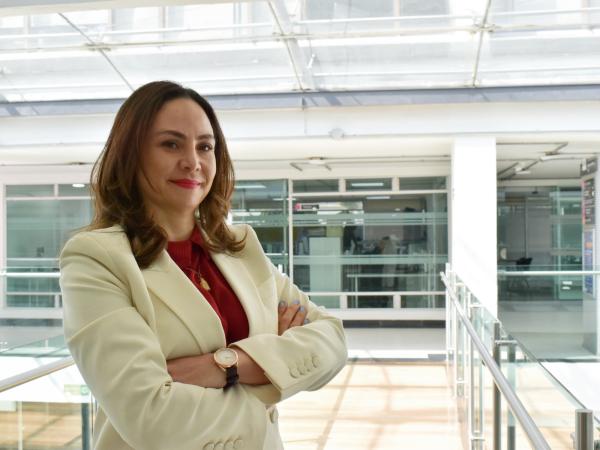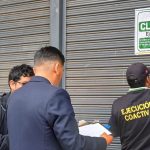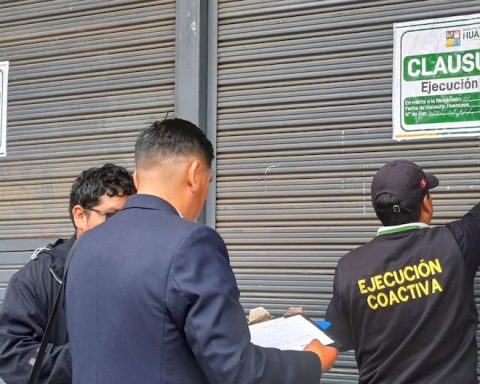Since its creation in 1953, Dane has been a technical entity that has strengthened statistics, and its role will also be crucial for the government of Gustavo Petro. Piedad Urdinola, the director of the department since September, spoke with Portfolio about the challenges facing the entity on issues such as the economic census, multipurpose cadastre and the digitalization of the Dane.
(Annual variation of inflation reached 13.28% in February).
What are the main challenges that the Dane has under your administration?
The entity that I received has a great challenge, a transformation and a modernization in technological infrastructure. Technology has been advancing rapidly and the Dane requires that update to appropriate modern methodologies and statistics. It is a very important challenge that I took on when I sat in this chair. One of my goals at the end of my period is to leave a much more up-to-date Dane in line with the 21st century.
Another important challenge is to have a much more precise measurement for the differential approaches and the different inequities; territorial, gender, ethnic and all possible crossings.
Since the last government, they had been working on an official statistics law, at what point is this law?
In November it already passed its third debate in Congress and we are thinking of passing it this month for its fourth and final debate, in which we hope it will be approved. So that with it the Dane is an entity with a technical nature, as it always has been, but now formally from the national law, and is the coordinator of the National Statistical System.
What changes then?
It allows several things. In the legislation there are a lot of decrees and norms about what the Dane does and that law basically puts in a single norm all the legislative subjects and around the operation and responsibilities of the Dane.
(Unemployment rate in Colombia for January 2023 was 13.7%).
And a second very important point is that the entity is the governing body of the National Statistical System in which all the institutions, public and private, that also produce statistical information come together. The idea is that the entire system speaks, efficiencies are generated and efforts are avoided. With a single governing body it is easier to standardize and harmonize concepts. This reinforces the technical nature of the Dane and eliminates the anxiety that any government can put anyone here, leaving an explicitly technical profile.
The budget addition presented by the Government allocates more resources to the sector, what are they going to be used for?
Of these additional resources, which we appreciate that the statistics sector has been taken into account, three quarters go to Igac (Agustín Codazzi Geographic Institute) to collect multipurpose cadastre, an ideal within all statistical plans, but for more than 30 years has been forgotten in practice.
(Industry production in Colombia grew 10.7% in 2022).
For this government, it is an essential priority to have this information, in order to establish important policies for the country, such as agrarian reform. As established in the National Development Plan, this multipurpose cadastre revolves around water, which within a climate crisis scheme will be a fundamental resource for any population in the future. So, it has many advantages from the design of policy and planning. It will be a joint effort between Dane and Igac, like a large census of properties. We are going to have like a millefeuille of information, the Dane will put many layers of information that will allow us to make many crosses.
How is the economic census process going and how much will it cost?
Like any census, it is a very large operation that covers the entire country. It is something that has been done for several years. The design phase of a census lasts around three years. Last year we carried out pilot and experimental tests and this year we continue to refine and review the questionnaires. And if it is approved in the National Development Plan, we hope to do it physically in 2024. As it has not yet been approved, we do not have the resources and I cannot answer for sure.
(The products on the market that have risen the most in the last year).
We have designed a census that will also count all the units of the popular economy. It is an ambitious plan that the country has never done.
The Development Plan establishes that Dane will design and implement a new information system for the popular economy, how will it work?
It is complex to the extent that it is an information system, but conceptually it is easy to understand. The entity will advance a set of institutional protocols, which supply all the projects under the responsibility of the Dane, within these guidelines the Popular Economy Information System (Siep) will be generated and the approval of the National Development Plan is necessary. We will start with conceptual and methodological aspects to integrate it with other data sources, such as the microbusiness survey, cultural economy statistics, circular economy statistics, the information system on informal economic activities, and other administrative records.
What is Dane’s role in the Government’s change project?
It is and will remain an independent technical entity. Our job is to produce statistical information under the demands and needs of the country. In this new context, for example, there is a line in the multipurpose cadastre around water, the hydrology information needs to be clear. And we also have a circular economy satellite account, which arises from the need to reuse and recycle and generate an entire economy around it.
LAURA LUCIA BECERRA ELEJALDE


















